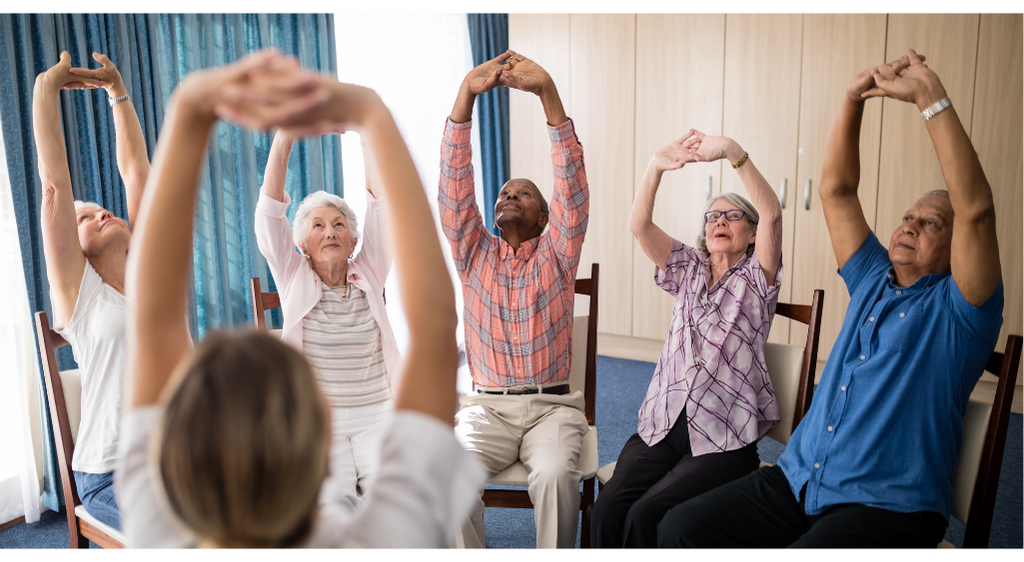
Aging can take a toll on the body, but stretching is a great way to reduce aches, loosen up muscles and relax your joints. Here are eight of our favorites that will keep you active and healthy.
Is stretching good for seniors?
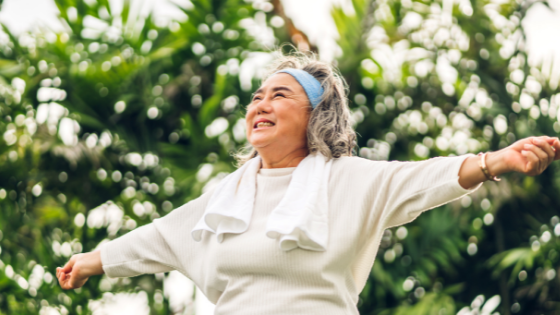
Updated August 23rd, 2024
Clinical Editor: Megan Dodson, PA-C
For many older adults, maintaining mobility at an older age can be quite difficult. Our bodies, like any machine, undergo many changes as we age, which can make staying active and mobile all the more challenging. Through proper care and exercise, however, we can strengthen our muscles and joints to help mitigate changes and keep our bodies strong and flexible. Staying active and mobile can be a challenge, but maintaining a healthy and active lifestyle means that we are working our body’s muscles to stay strong and mobile well into old age.
In addition to muscle and movement maintenance, stretching exercises can help regulate blood glucose levels – it can even improve mental health. Especially important for seniors, stretching exercises play a crucial role in fall prevention by helping you maintain your balance and overall strength.
Impact of age on flexibility
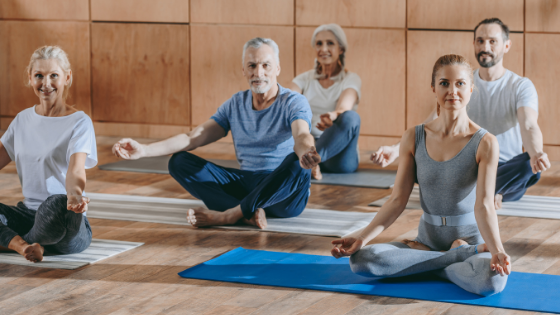
Aging affects many different parts of the body. When it comes to flexibility, your muscles, joints and tendons all change in a way that impacts flexibility for seniors and can affect your mobility, strength and more.
Per the American Association of Orthopedic Surgeons, “ligaments, connective tissues between bones, become less elastic, reducing mobility.” Additionally, joint mobility is restricted as we age due to changes in tendons. The less mobile joints are used, the less flexible and mobile seniors might be.
No matter your level of activity, stretching exercises for seniors are an important addition to your routine. Stretching exercises yield many health benefits for seniors ranging from injury prevention to mobility maintenance. Yet, like any exercise, make sure to listen to your body as it is much more sensitive to slow movements than in your younger days. The goal here is not to “feel the burn,” but to gently bring your muscles to life.
Before we dive into the exercises, let’s talk about what you will need.
Using these stretching exercises
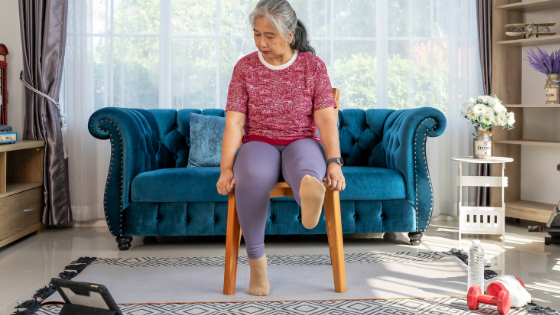
One of the best parts about stretches is that your routine is completely customizable.
You could take just a handful of these stretches to alleviate any muscle or joint pain and stiffness, or you can do all seven and incorporate them at the end of your existing workout or daily routine. These exercises are entirely within your control, and whatever suits your needs best will serve you and your health in the long run!
To get started, it is important to identify which muscle groups should be prioritized, unless of course you have a condition or complication requiring you to stretch a certain muscle.
Per Harvard Health Publishing, the “areas most critical for mobility are in your lower extremities – your calves, your hamstrings, your hip flexors in the pelvis and quadriceps at the front of the thigh.”
However, it should be noted that stretching muscles in your upper body is also beneficial. In our list of great stretches to follow, you will learn about all types of stretches to help maintain full-body mobility, muscle longevity and overall health.
When to use stretching exercises for seniors
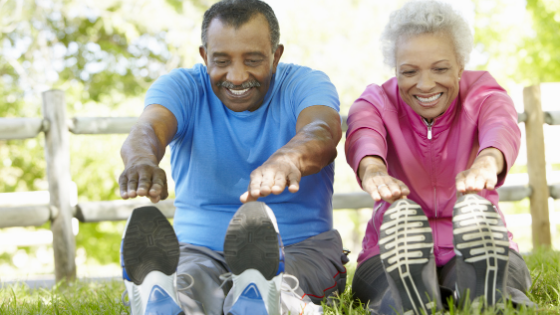
When deciding the best time to perform these stretches, there are two trains of thought to help you decide which is best for you. If you are a senior who routinely performs exercises, such as jogging, walking or other forms of exercise, then your recommended stretching time is different from that of seniors who do not get as much exercise.
For active seniors who routinely exercise, the best time to perform these stretches is at the end of the activity while your muscles are still warm and loose. Before your exercise, a five-minute warm-up, such as an easy walk or jog, is recommended. But in this case, the stretching exercises should come after your workout to maximize results.
For seniors who don’t plan on doing a specific workout, stretching can be done at virtually any time of the day. For the sake of memory, it might be best to perform these stretches in the mornings or in the evenings. As with active seniors, make sure to walk around for a few minutes before stretching to ensure your muscles are loose and warm. Note that the stretches themselves are not the warm up.
Before diving in, there’s another important point to be made about stretching exercises. First, remember to pay attention to your breathing throughout the stretches. During exercise, it’s easy to forget and not realize you are holding your breath.
Now that we have reviewed some important logistics for stretching, it’s time to look at what stretching exercises for seniors are best. Let’s get started:
Stretching exercises for seniors
1. Standing quadriceps stretch
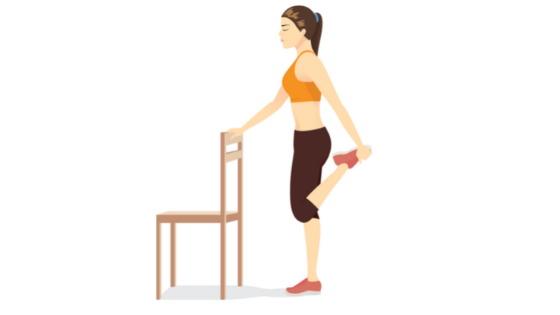
The first exercise on our list is the standing quadriceps stretch. As a crucial exercise for mobility and flexibility, the standing quadriceps stretch is an excellent stretching exercise for seniors.
As the largest extremities, the legs may require multiple stretches for the full benefits these stretches yield. This exercise focuses on the quadriceps muscle, located on the top half of your upper leg.
To start:
- Make sure you limber up before stretching by doing some light walking around.
- Grab a chair or the back of a couch for support, as you will be balancing on one leg for this exercise. The heavier the support, the better.
- Hold on to the chair with your left hand. Bend your right knee, and, using your right hand, grab your leg by the ankle or top of the foot and gently pull your foot towards your bottom. Keep your knee pointed towards the floor.
- Hold this position for 10 to 30 seconds, let your leg back down and repeat with your left leg.
For folks that have complications when standing up, you can try the seated ankle stretch, which also serves as a great stretch for your quadriceps.
2. Seated knee to chest
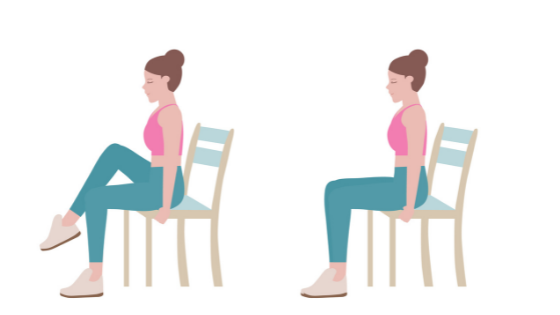
This lower body stretch is a necessary exercise for seniors as it impacts more than just your legs. The knee to chest stretching exercise improves mobility in your hips and knees by stretching the joints, while also improving the flexibility of your lower back. A nice added bonus about this stretch is that you don’t need to stand!
Here’s how to get started:
- Like the last exercise, limber up a bit by doing some light walking to warm up your legs.
- Sit comfortably in your chair, and while seated, grasp your right knee and slowly pull it towards your chest.
- Once you feel the stretching sensation, hold this position for 10 to 30 seconds.
- Gently guide your leg back down to the floor and repeat this exercise with your other leg.
[iorablogcta]
3. Hamstring stretch
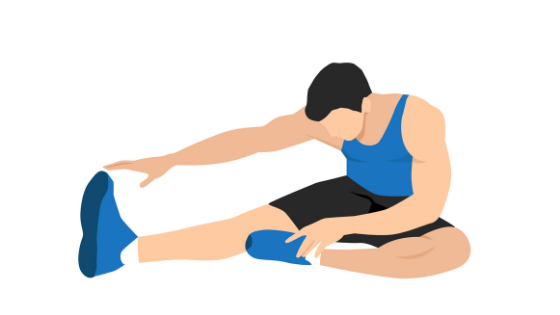
Now that we’ve covered your quadriceps and your hips, it’s time to show your hamstrings a little bit of love.
This stretching exercise targets your lower back and your legs, a crucial component for maintaining flexibility in seniors. This stretch will decrease stiffness and keep your legs and back mobile and loose.
To start the stretch:
- Select a firm surface to sit on.
- Next, extend one of your legs out on the surface.
- Slowly lean forward, breathe and reach for your thigh, knee or ankle. (Be careful with this stretch as you do not want to hyperextend your hamstring). Next, hold this position for 10 to 30 seconds and gently lay your leg back down and repeat with the other side of your body.
4. Soleus stretch
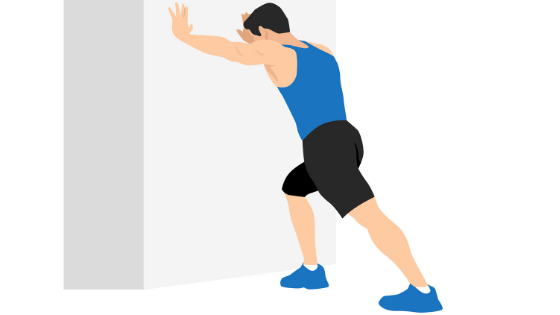
This simple stretch is great for another major muscle group in your legs: the calf muscle. The soleus stretch targets your calves and lower body flexibility by improving the deep calf muscle and the overall functionality of your legs.
To start this stretching exercise:
- Stand up and face a wall.
- Place your right foot in front of your left and place both hands on the wall in front of you for support. Once you feel comfortable, begin to slowly bend your right knee until you begin to feel a stretch in your lower left leg. Make sure your left heel stays on the floor. Hold this position for 10 to 30 seconds.
- After you feel good and stretched, slowly stand up, swap the positions of your left and right feet and repeat the exercise again.
5. Overhead side stretch
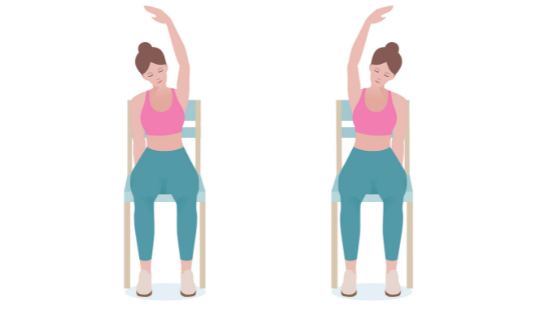
Fifth on our list of exercises, we will start with the upper body! The overhead side stretch, or standing side stretch, is a great and easy way to loosen up your abdomen, back and shoulders. To start:
- Stand with your feet shoulder-width apart and raise your arms over your head, interlocking your fingers if you’d like.
- Keeping your torso long, slowly lean to the left. Hold this position for 10 to 30 seconds, return to the center;
- Repeat the same stretch on the right side.
- *Another great aspect of this exercise is that you can do it while sitting down.
For individuals with mobility or health complications, this exercise can be completed in a similar way:
- Sit in a tall chair and keep your hips, knees and toes facing forward.
- Lift your arms above your head and repeat the instructions above. (If you find this too difficult, place your arms on your hips, or down to your side).
- Gently lean to either side for 10 to 30 seconds.
- If needed, one hand can hold onto the chair for support and balance.
6. Shoulder stretch
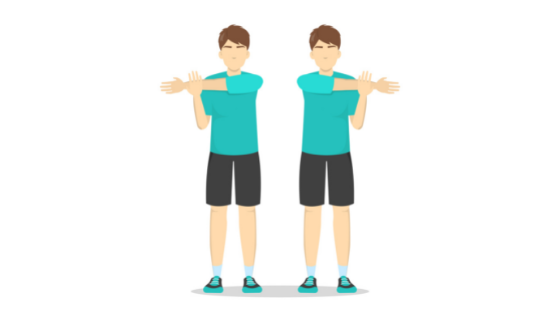
For our next stretch, we’ll stay with the upper body and focus on shoulders. With this simple shoulder stretch, you can loosen up your shoulder joint, which can be used to alleviate muscle pain and prevent deterioration.
Here’s how you should start:
- Stand, or sit straight up, as tall as you can.
- Grab one of your arms with your opposite hand and slowly, gently pull your arm across your chest until you start to feel a stretch in your shoulder. (While you stretch, make sure that you keep your elbow below shoulder height).
- Hold this position for 10 to 30 seconds and then repeat with your other arm.
Much like the exercise before this, you can perform this stretch while standing or sitting, whichever you prefer to get the most out of your stretching exercises.
7. Tricep stretch
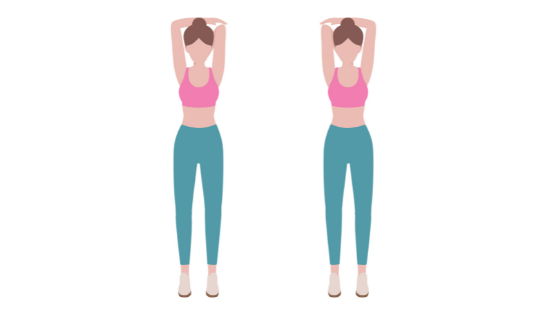
Next on our list, but last for our upper body, is the tricep stretch. Designed to stretch your arms, the tricep stretch is a great way to improve the mobility of your shoulders as well.
Much like the rest of our upper body exercises, the tricep stretch can be completed while either standing or sitting. Just be sure to sit tall and use a chair to keep your back straight!
- Stand (or sit) tall and position your feet hip-width apart.
- Raise both arms over your head, bending your right arm so that it’s positioned behind your head.
- Next, place your left hand on your right elbow and gently pull your elbow down towards your back until you begin to feel stretching in your upper arm.
- Hold this stretch for 10 to 30 seconds, return your arms to their original position and repeat the same stretch for your left arm.
8. Standing hip flexor
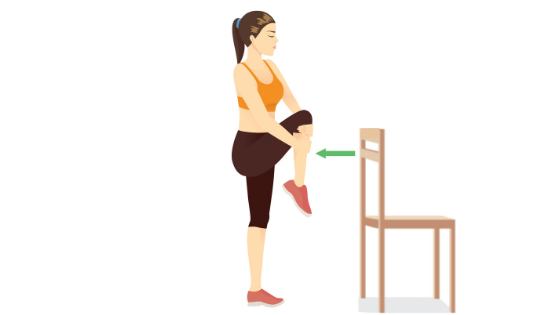
Last, but certainly not least on our list of stretches for seniors is the standing hip flexor. As one of many hip flexor stretches for seniors, this stretch is a great way to alleviate tightness or pain in your hips. Here’s how to do it:
- First, grab a sturdy chair and stand with your feet facing the back of the chair, be sure to distance yourself far enough from the chair to lift your leg up.
- Then, while holding onto the chair with both hands, step your left leg back, and keep your right knee bent. Stretch your torso up straight. You should feel the stretch in the front of the left hip.
- Hold this position for about 10 to 15 seconds, switch your legs, repeat.
What to do after stretching
After completing your stretching exercises, it’s important to address other ways you can improve your health. Proper hydration, exercise and diet all work in tandem with stretching exercises to help seniors maintain overall health.
The One Medical blog is published by One Medical, a national, modern primary care practice pairing 24/7 virtual care services with inviting and convenient in-person care at over 100 locations across the U.S. One Medical is on a mission to transform health care for all through a human-centered, technology-powered approach to caring for people at every stage of life.
Any general advice posted on our blog, website, or app is for informational purposes only and is not intended to replace or substitute for any medical or other advice. 1Life Healthcare, Inc. and the One Medical entities make no representations or warranties and expressly disclaim any and all liability concerning any treatment, action by, or effect on any person following the general information offered or provided within or through the blog, website, or app. If you have specific concerns or a situation arises in which you require medical advice, you should consult with an appropriately trained and qualified medical services provider.
